Thirty Seconds Over Tokyo

Brief Synopsis
Cast & Crew
Mervyn Leroy
Van Johnson
Robert Walker
Tim Murdock
Don Defore
Gordon Mcdonald
Film Details
Technical Specs

Synopsis
When Lt. Col. James H. Doolittle calls for volunteers for a top-secret Army Air Force mission, pilot Lieut. Ted Lawson is one of many men to offer his services. Lawson and his B-25 crew, co-pilot Dean Davenport, gunner David Thatcher, bombardier Bob Clever and navigator Charles McClure, are sent for training at Eglin Field in Florida, and speculate along with the other crews about the nature of the mission. During the first of many briefings, Doolittle informs the men that the mission will be tough and dangerous and encourages anyone with doubts to drop out. Ted's friend and fellow pilot Bob Gray suggests to Ted that because he has recently married, he has too much to lose, but Ted shrugs off Bob's concerns. Even after he finds out that his wife Ellen, who shows up unexpectedly at the training camp, is going to have a baby, Ted remains determined to continue the mission. A devoted, sympathetic wife, Ellen supports Ted's decision and assures him that she is unafraid of the future. While still keeping the details of the mission secret, Doolittle and naval lieutenant Miller then begin training the crews for short-distance take-offs. As with all the B-25 crews, Ted and his men, who have named their plane "The Ruptured Duck," initially have trouble performing the difficult maneuver, but eventually master it. Then, after ten weeks of training, the men are called to a briefing in the middle of the night and are told that they are leaving immediately for the Alameda Naval Air Base near San Francisco. Ted says a hurried, brave goodbye to Ellen, who promises to write him a letter every day, even though she knows he will never receive them.
In San Francisco, as the planes are being loaded onto the U.S.S. Hornet , a Navy aircraft carrier, Ted learns that another crew has been dismissed from the mission because their plane developed minor mechanical problems. Although "The Ruptured Duck" has been having its own minor problems, Ted decides not to say anything about them, for fear that the plane will be grounded. Soon after the huge ship sets sail, Doolittle finally reveals to the men that they will be conducting the first ever bombing mission on Japan. When Ted and the others are told that the planes are to take off from the deck of the carrier, a feat never before attempted, they fully understand the purpose of their training. That night, Ted and Bob discuss the mission and agree that, while they do not hate the Japanese people, they have no qualms about the bombing raid. As the Hornet approaches the Japanese coast, Doolittle gives the men a final briefing, noting that while all of the targets are military, some Japanese civilians will be killed. Once again, Doolittle offers the men a chance to back out, but no one accepts. The next day, the carrier is spotted by the Japanese, forcing the mission, which had been planned for night, to start early. Doolittle, who has ordered the ship's crew to push overboard any plane that fails to start quickly, is the first to take off. "The Ruptured Duck" has trouble starting, but a determined Ted gets the engine going just in time. Although its left engine is misfiring, "The Ruptured Duck" drops its bombs over Tokyo and heads for the free Chinese coast, where crude airstrips have been built. As they are flying there, however, a storm blows in, causing Ted to crash-land just short of the beach. The plane sinks, but the crew swims to shore. All but David are injured, and Ted's leg is severely cut.
Soon after, sympathetic Chinese villagers appear and carry the Americans to safety. Ted and the others are befriended by a Chinese resistance fighter nicknamed "Guerilla Charlie," who helps them to a small town. There Dr. Chung attends to the men's wounds, but as he has no medicine, orders that they be carried to his father's hospital sixteen miles away. With the Japanese Army not far behind, the men reach the hospital and learn that another crew has been rescued and is on its way there. Although the two crews enjoy their reunion, Ted is told that his leg, which has developed gangrene, must be amputated. While recalling happier days with Ellen, the near-delirious Ted faces the operation with courage. Later, having recovered enough to be moved, Ted is evacuated to Chungking along with the other injured men. After thanking their Chinese rescuers, who helped save many other Americans, including Bob, the crew of "The Ruptured Duck" returns to the U.S. Ellen then receives a phone call from Doolittle and learns about Ted's injury and his refusal to see her until he has received his artificial leg. Urged by Doolittle and her mother, the now visibly pregnant Ellen goes to see Ted at the hospital and, after reassuring him that she is still very much in love, embraces him.

Director

Mervyn Leroy
Cast
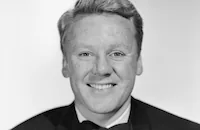
Van Johnson

Robert Walker

Tim Murdock

Don Defore

Gordon Mcdonald

Phyllis Thaxter

Horace Mcnally

Spencer Tracy
John R. Reilly

Robert Mitchum
Scott Mckay

Donald Curtis

Louis Jean Heydt
Wm. "bill" Phillips
Douglas Cowan

Paul Langton
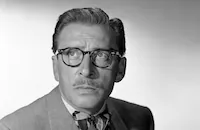
Leon Ames

Bill Williams
Robert Bice
Dr. Hsin Kung
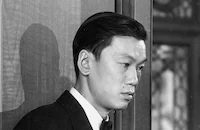
Benson Fong
Ching Wah Lee

Alan Napier
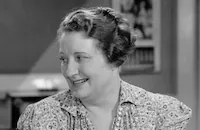
Ann Shoemaker

Dorothy Ruth Morris

Jacqueline White

Selena Royle
Will Walls
Jay Norris
Wah Yee
Jack Mcclendon
John Kellogg
Peter Varney

Walter Sande

Steve Brodie
Eddie Hall
Edith Leach
Arthur Space
Mike Kilian
Charles King Iii
Ralph Brooke

Wally Cassell
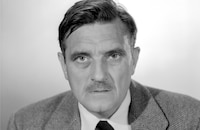
Morris Ankrum
William Moss
Harry Hayden
H. T. Tsiang
Carlyle Blackwell Jr.
Virgil Johansen
William Healy
Harold Sworland
Dick Addison
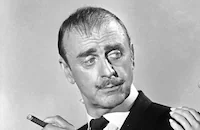
John Dehner
Bob Thom
Richard Wang
Key Chang
Johnnie James
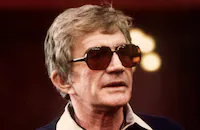
Blake Edwards
John Gannon
Charles Gordon
Luke Chan
Mary Chan
Bob Mccutchin
Harold Fong
Charles Mitchell
Bob Maclean
Tom Auera
Michael Kostrick
Michall Knudsen
Brad Towne
Harlan Miller
Lyle Clark
Martin Lowell
Steve Barclay

Myrna Dell
Katharine Booth
Lorraine Miller
Lucille Casey
Eve Whitney
Sybil Merritt
Frances Neal
Joan Lawrence
Peggy Maley
Elizabeth Dailey
Hazel Brooks
Natalie Draper
Shirlee Howard
Ann Lundeen
Beryl Mccutcheon
Erin O'kelly
Elaine Shepard
Eugenia B. Thompson
Noreen Roth
Kay Williams
Hal Derwin
Eleanor Counts
Genevieve Grazis
Joy Vahl
Jack Arkin
Johnny Duncan
Crew
William H. Cannon
William H. Cannon
Major Dean Davenport
Jack Dawn
Kay Dean
John F. Dullam
Lt. H. Allen Fairbanks
Art Fitch
Kay Fitch
Virginia Garland
Cedric Gibbons
A. Arnold Gillespie
Paul Groesse
Russell Haverick
June Hershey
Wei Hsueh
Ralph S. Hurst
Irene
Donald Jahraus
Millard Kaufman
Standish J. Lambert
A. Lindsley Lane
Capt. Ted W. Lawson
George Lee
Dr. Philip Lee
Mervyn Leroy
Bert Lowe
Frank B. Mackenzie
Robert Martin
M. J. Mclaughlin
Warren Newcombe
Harold Rosson
Harold Rosson
Richard Rosson
Douglas Shearer
Robert W. Shirley
Jack Martin Smith
Newell Sparks
Herbert Stahlberg
William Steinkamp
Michael Steinore
Herbert Stothart
Walter Strong
Frank Sullivan
Robert Surtees
Don Swander
John A. Williams
Edwin B. Willis
Wally Worsley
Sam Zimbalist

Photo Collections
Videos
Movie Clip





Trailer
Hosted Intro
Film Details
Technical Specs

Award Wins
Best Special Effects
Award Nominations
Best Cinematography
Articles
The Essentials - Thirty Seconds Over Tokyo
To pay the Japanese back for their sneak attack on Pearl Harbor, 16 B-25s undertake a risky takeoff from the deck of an aircraft carrier on a one-way trip to bomb Tokyo and Yokohama (this was the first time a plane this large had attempted such a takeoff). But first Ted Lawson (Van Johnson), captain of a bomber nicknamed The Ruptured Duck, and his men are put through intensive training before embarking on their perilous mission. With no fuel to return home, they set a course to crash on the Chinese mainland, behind enemy lines, in hopes that the peasants there will sneak them to safety in the North.
Director: Mervyn LeRoy
Producer: Sam Zimbalist
Screenplay: Dalton Trumbo
Based on the book by Ted W. Lawson and Robert Considine
Cinematography: Harold Rosson, Robert Surtees
Editing: Frank Sullivan
Art Direction: Cedric Gibbons, Paul Groesse
Music: Herbert Stothart
Cast: Van Johnson (Ted Lawson), Robert Walker (David Thatcher), Don DeFore (Charles McClure), Phyllis Thaxter (Ellen Lawson), Stephen McNally ('Doc' White), Robert Mitchum (Bob Gray), Scott McKay (Davey Jones), Louis Jean Heydt (Lieut. Miller), Paul Langton (Captain 'Ski' York), Leon Ames (Lieut. Jurika), Benson Fong (Young Dr. Chung), Alan Napier (Mr. Parker), Ann Shoemaker (Mrs. Parker), Selena Royle (Mrs. Reynolds), Spencer Tracy (Lieutenant Colonel James H. Doolittle), Morris Ankrum (William F. Halsey), Karin Booth (Girl in Officer's Club), Steve Brodie (MP Corporal), John Dehner (Lieutenant Commander), Blake Edwards (Lieut. Smith's Crewman), Leatrice Joy Gilbert (Girl)
BW -138 m.
Why THIRTY SECONDS OVER TOKYO is Essential
Like many Hollywood films about World War II made between 1942 and 1944, Thirty Seconds Over Tokyo was based on an actual wartime campaign, Lieutenant Colonel James H. Doolittle's 1942 bombing raid on Japan; it gave audiences back home a sense of how the war was going. Many critics have credited the film with playing a major role in bringing home the realities of World War II to domestic audiences.
Contemporary reviewers hailed Thirty Seconds Over Tokyo as the finest aviation film made during World War II.
In a long career including such classics as I Am a Fugitive from a Chain Gang (1932), Gold Diggers of 1933 (1933) and Random Harvest (1942), Mervyn LeRoy's simple, straightforward work on Thirty Seconds Over Tokyo is considered his best direction.
Dalton Trumbo's screenplay is considered the best of his work before he was blacklisted in 1947.
Thirty Seconds Over Tokyo brought Van Johnson his first starring role in an A picture, after getting a career build-up in supporting roles and low-budget films. It also marked the screen debuts of Phyllis Thaxter, cast as his wife, and the last minor supporting role for Robert Mitchum, then a freelance actor; he would graduate to leading men roles in his next feature, Nevada (1944).
by Frank Miller

The Essentials - Thirty Seconds Over Tokyo
Pop Culture 101 - Thirty Seconds Over Tokyo
Thirty Seconds Over Tokyo was so convincing that military pilots tried to duplicate the aerial maneuvers created by MGM's Special Effects Department. While serving as an Air Force correspondent in the Pacific, screenwriter Dalton Trumbo learned that attempts to copy the quick, short-distance takeoffs in the film had increased the number of aircraft accidents.
For the film's 1955 re-issue, new credits were shot with Van Johnson, Robert Mitchum and Spencer Tracy billed above the title. Mitchum had moved into the spot previously held by the then-deceased Robert Walker.
The air raid sequence was used again in Bridge to the Sun (1961), while the shot of Tokyo taken from the nose of Capt. Lawson's bomber would be used under the opening credits of Midway (1976).
In the '70s, Van Johnson filmed a commercial for Post Fortified Oak Flakes on a set reminiscent of the flight deck of the USS Hornet. His final line was "Take me to Tokyo -- and back!"
The rock band Pere Ubu named its 1975 debut single after the film.
by Frank Miller
Pop Culture 101 - Thirty Seconds Over Tokyo
Trivia - Thirty Seconds Over Tokyo - Trivia & Fun Facts About THIRTY SECONDS OVER TOKYO
LeRoy had to shoot a complicated aerial sequence for Thirty Seconds Over Tokyo in Florida on a cloudy day. When the cloud cover finally broke, he shouted into his microphone, "Bring them in. Bring them in while the sun's out." Unknown to him, his words were broadcast to air towers all over the state, where nobody knew what he was talking about. The incident even made the next day's papers.
The choir of Chinese children who sing "The Star Spangled Banner" in Thirty Seconds Over Tokyo were conducted by Dr. Phillip Lee, a pastor, who also translated the national anthem into Chinese.
Thirty Seconds Over Tokyo premiered in New York with a benefit for the Sixth War Loan drive. The Los Angeles opening was a benefit for the Volunteer Army Corps.
MGM advertised the film with the line "Heart-Warming Romance...Stark, Sensational Drama! Thrills! Action! Adventure!...Ripped From The Heart!"
Thirty Seconds Over Tokyo was a big hit for MGM, bringing in $4.5 million in domestic rentals. It would help make Spencer Tracy the number five box-office star of the year. A year later, Van Johnson would enter the top ten at number two.
While Thirty Seconds Over Tokyo was shooting at MGM, an executive decided Robert Mitchum's car was too beat-up for the studio parking lot and told him to either get a new car or park somewhere else. The next day, Mitchum was four and a half hours late for his call. When he arrived, he explained to LeRoy and producer Sam Zimbalist that he had been forced to take the bus to work. By day's end, the ban on his car had been lifted, and Mitchum was never late again.
According to some sources, Mitchum had a fling with the unhappily married Lucille Ball while filming Thirty Seconds Over Tokyo on the MGM lot.
While MGM was still considering signing Mitchum, they showed some of his scenes to their famed acting coach, Lillian Burns, and asked her to work with him. When they met, she told him she wasn't going to work with him because she didn't want to get in the way of his natural talent. "Do what you've been doing," she told the young actor, which is exactly what he did for the rest of his career.
Robert Mitchum's supporting performance in Thirty Seconds Over Tokyo convinced RKO Pictures to offer him a long-term contract.
For some reason, composer Herbert Stothart included bits of the title song from Oklahoma! in the score, even though none of the characters in the film are from that state.
SOURCES:
Robert Mitchum: Baby, I Don't Care by Lee Server
Mervyn LeRoy: Take One by Mervyn LeRoy
Memorable Quotes from THIRTY SECONDS OVER TOKYO
"One-hundred and thirty-one days after December 7, 1941, a handful of young men, who had never dreamed of glory, struck the first blow at the heart of Japan. This is their true story we tell here." -- Opening title card.
"Hello, hello, York? Doolittle. I want you to get 24 B-25's and volunteer crews down to Eglin Field as soon as you can. The job'll take 'em out of the country for about three months. Tell 'em it's a secret mission. They won't know where they're going until they get there. That's right, volunteers. Tell them they're not to talk to anybody. That's an order!" -- Spencer Tracy, as General James Doolittle, setting up the mission.
"Oh, Ted, I'm going to write you a letter every day you're gone. I know they won't deliver them. I won't even mail them, but I'm going to write them anyway. That way we'll kind of be in touch. That way we'll feel close." -- Phyllis Thaxter, as Ellen Lawson.
"Tell me, Honey, how come you're so cute?"
"I had to be if I was going to get such a good-looking fella." -- Van Johnson, as Lieutenant Ted Lawson, and Thaxter, as Ellen Lawson, sharing a repeated exchange.
"When I was a kid, I used to dream about going someplace on a ship. Well, here I am!" -- Robert Mitchum, as Lieutenant Bob Gray.
"Well feed me corn and watch me grow! How did all this scum get in here?" -- John R. Reilly, as Lieutenant Jacob 'Shorty' Manch.
"I have one sorrow, Lieutenant, that we did not have the medicine to ease your pain."
"You saved my life, Doc."
"I hope that someday you'll come back to us."
"We'll be back. Maybe not us ourselves, but a lotta guys like us, and I'd like to be with them. You're our kind of people." -- Johnson, as Lieutenant Ted Lawson, bidding goodbye to Benson Fong, as Young Dr. Chung, who cared for him in China.
Compiled by Frank Miller
Trivia - Thirty Seconds Over Tokyo - Trivia & Fun Facts About THIRTY SECONDS OVER TOKYO
The Big Idea - Thirty Seconds Over Tokyo
Like most Hollywood studios during the war years, MGM was doing its part by making films about the major campaigns. In the days when movie attendance was at an all-time high, such films served the function television would in later years in giving viewers on the home front a sense of what was going on overseas. Through friends in Los Angeles, Lawson got in touch with producer Sam Zimbalist and worked out a deal to sell the film rights to MGM for $100,000.
MGM notified the War Department that they had three goals in making the film: to improve public morale, to dispel rumors that the Army and Navy were not working together effectively during the war and to generate support for China's part of the war effort by showing how the Chinese Army and peasants helped downed U.S. flyers escape the Japanese. The studio did not, however, mention that the Chinese helping the downed flyers were Communist guerillas.
To make the details of the raid as accurate as possible, screenwriter Dalton Trumbo interviewed Lawson and other men who had flown the mission. Wartime censorship prevented him from mentioning the name of the aircraft carrier from which they flew or the fact that one of the planes had crashed in the U.S.S.R. However, the War Department let Trumbo fly on B-25s for research. The screenwriter also incorporated a real detail into the film: Like the real-life carrier, the USS Hornet, there was a dried hornet's nest on the deck of the film's plane.
Believing that his performances as heroic wartime figures in A Guy Named Joe (1943) and The Seventh Cross (1944) were typecasting him, Spencer Tracy initially turned down the role of Lieutenant Colonel James H. Doolittle. At one point, MGM was set to cast Brian Donlevy in the role, with Doolittle's blessing. Tracy finally agreed to accept the part when his friend Van Johnson was cast in the film's lead; the senior actor wanted to help boost the young actor's career.
Robert Mitchum won his supporting role on the strength of a strong performance in the B-movie film noir When Strangers Marry (1944) and the urging of his agent, a friend of director Mervyn LeRoy's. The director tested him for 30 different roles, then told him, "You're either the lousiest actor in the world or the best. I can't make up my mind which." LeRoy tried to convince MGM to sign him to a contract and even considered signing him personally for a projected film version of The Robe. Instead, he sent Mitchum to the head of RKO Pictures, where he was hoping to make the biblical epic. That studio signed him, and one year later, Mitchum became a star in Story of G.I. Joe (1945).
by Frank Miller
SOURCES:
The Tough Guys by James Robert Parish
The Big Idea - Thirty Seconds Over Tokyo
Behind the Camera - Thirty Seconds Over Tokyo
During location shooting, many of the young actors in the cast bonded over their boredom and the tough living conditions. They also attracted the ire of many of the enlisted men, who resented their not being in the service. As drinking increased, so did clashes between the cast and the military men. At one point Robert Mitchum gave a brutal beating to a drunken sergeant who was causing problems for co-star Robert Walker.
Because the Navy could not supply an actual aircraft carrier for the shoot, most scenes of the team launching and preparing at sea were created by combining newsreel footage, rear projection, miniatures and other special effects. MGM built a mock-up of the USS Hornet's flight deck on Stage 15. The set was large enough to hold four B-25s.
The actual take-off scenes in Thirty Seconds Over Tokyo were created by building about 80 percent of the flight deck on a scale of one inch to the foot. The miniature was then set in the studio's water tank. The special effects team couldn't generate waves large enough to move a model of that size, so the carrier was attached to a hydraulic system that duplicated its movement at sea while pumps pushed water past it. Miniature planes attached to piano wire were moved in synchronized patterns to simulate the takeoffs. This was then combined with newsreel footage of the actual mission.
San Francisco and Oakland filled in for Japan for some aerial shots in Thirty Seconds Over Tokyo. When an oil refinery in East Oakland caught fire, it provided the footage the special effects department needed to recreate the bombing. The aerial approach to Tokyo was filmed by mounting cameras on the noses of several B-25s flown over the Pacific towards Los Angeles, while aerial shots of China were made near Santa Maria, CA.
Van Johnson had been in a serious car wreck while filming A Guy Named Joe (1943). Afterwards, makeup artists usually had to cover his forehead scars. For the final half of Thirty Seconds Over Tokyo, after Johnson's plane crashes in China, they simply let the real scars show rather than adding fake scars.
The set was particularly tense the day they filmed the amputation of Johnson's leg because Lawson was there watching every take.
by Frank Miller
Behind the Camera - Thirty Seconds Over Tokyo
Thirty Seconds Over Tokyo
Based on the memoirs of Captain Ted Lawson, Thirty Seconds Over Tokyo is a documentary style re-creation of the first American strike on Japan in retaliation for the bombing of Pearl Harbor. Following Capt. Lawson, played by Van Johnson in his first major screen role, we watch the flight team, which includes Spencer Tracy as Col. James Doolittle, and Robert Mitchum in his last minor role as Bob Gray, prepare for their dangerous mission. Because island bases near the target were unavailable, twin-engine bombers, in a historic first, had to take off from the deck of an aircraft carrier. When a storm forces the mission to depart ahead of schedule, an unpredictable situation occurs after Capt. Lawson and his crew complete their mission. They are forced to crash land in Mainland China where they become dependent on Chinese guerillas to smuggle them to safety.
Though the actual mission was planned as a publicity stunt rather than a military maneuver, MGM felt that a picture based on the dramatic events of the bombing would contribute to public morale. Seizing on the opportunity for high profile propaganda, the War Department cooperated within the limits of security, providing twelve B-25 bombers along with pilots to fly them. Because an aircraft carrier could not be loaned to the production, MGM's head of Special Effects, Buddy Gillespie, was called in to reconstruct the dramatic launch of the bombers. Employing miniatures built on a scale of one inch to one foot, Gillespie built a 60-foot version of the aircraft carrier Hornet, and launched it in the studio's 300 square foot water tank. Miniature bombers attached to an overhead trolley with piano wire were then shot, and the photography combined with newsreel footage. The result was a breathtaking sequence that could have been lifted directly from an actual Air Force documentary.
Refreshingly free of contrived heroics and forced wisecracks, Thirty Seconds Over Tokyo was a huge critical and commercial success when it opened for the first time in 1944. Thrilling audiences to the tune of $4.5 million - a huge figure at that time - 'and garnering an Oscar for Best Special Effects, Thirty Seconds Over Tokyo was labeled by Newsweek Magazine as "one of the finest war movies to date," and it's just as enjoyable today.
Director: Mervyn LeRoy
Producer: Sam Zimbalist
Screenplay: Dalton Trumbo
Cinematography: Harold Rosson, Robert Surtees
Editor: Frank Sullivan
Art Direction: Cedric Gibbons, Paul Groesse
Music: Herbert Stothart
Cast: Van Johnson (Lt. Ted Lawson), Robert Walker (Corporal David Thatcher), Tim Murdock (Lt. Dean Davenport), Don DeFore (Lt. Charles McClure), Phyllis Thaxter (Ellen Lawson).
BW-139m. Close captioning. Descriptive Video.
by Bill Goodman
Thirty Seconds Over Tokyo
TCM Remembers Van Johnson - Important Schedule Change on TCM In Honor To Salute VAN JOHNSON
The new schedule for the evening of Tuesday, December 23rd will be:
8:00 PM In the Good Old Summertime
9:45 PM A Guy Named Joe
12:30 AM Thirty Seconds Over Tokyo
2:30 AM The Last Time I Saw Paris
4:30 AM Thrill of a Romance
Van Johnson (1916-2008)
Van Johnson, the boyish leading man whose clean cut, All-American appeal made him a top box-office draw for MGM during World War II, died on December 12 in Nyack, New York of natural causes. He was 92.
He was born Charles Van Dell Johnson on August 25, 1916, in Newport, Rhode Island. By his own account, his early childhood wasn't a stable one. His mother abandoned him when he was just three and his Swedish-born father offered little consolation or nurturing while he was growing up. Not surprisingly, Johnson found solace in singing and dancing lessons, and throughout his adolescence, he longed for a life in show business. After graduating high school in 1934, he relocated to New York City and was soon performing as a chorus boy on Broadway in shows such as New Faces of 1936 and eventually as an understudy in Rodgers and Hart's musical, Too Many Girls in 1939.
Johnson eventually made his way to Hollywood and landed an unbilled debut in the film version of Too Many Girls (1940). By 1941, he signed a brief contract with Warner Bros., but it only earned him a lead in a "B" programmer Murder in the Big House (1941); his contract soon expired and he was dropped by the studio. Johnson was on his way back to New York, but as luck would have it - in the truest Hollywood sense - friends Lucille Ball and Desi Arnaz introduced him to Billy Grady, a lead talent scout at MGM, which was currently Ball's new studio. Johnson was signed up and almost immediately MGM had a star on its hands.
It might have been slow going at first, with Johnson playing able support in films such as Dr. Gillespie's New Assistant and The War Against Mrs. Hadley (both 1942). By 1943 the studio capitalized on his broad smile and freckles and starred him in two of the studio's biggest hits: A Guy Named Joe and The Human Comedy. Those two films transformed him into a boxoffice draw with a huge following, particularly among teenage girls. A near fatal car accident that same year only accentuated the loyalty of his fans, and his 4-F status as the result of that accident created an opportunity for him when so many other leading actors of the era (James Stewart, Clark Gable) were off to war. Johnson was quickly promoted as MGM'sleading man in war heroics and sweet romancers on the big screen: The White Cliffs of Dover, Thirty Seconds Over Tokyo (both 1944), Thrill of a Romance, the episodic Week-End at the Waldorf (both 1945), and a musical remake of Libeled Lady entitled Easy to Wed (1946).
Hits though these were, it wasn't until after the war that Johnson began to receive more dramatic parts and better material such as supporting Katharine Hepburn and Spencer Tracy in the political farce State of the Union (1948). other significant roles included the well-modulated noir thriller The Scene of the Crime, the grim war spectacle Battleground (both 1949), the moving domestic drama Invitation (1952) in which he played a man who is paid to marry a woman (Dorothy McGuire) by her father. Before he left MGM, he closed his career out in fine form with the sweeping musical Brigadoon, co-starring Gene Kelly and Cyd Charisse; and the lilting soaper The Last Time I Saw Paris (both 1954) with Elizabeth Taylor.
After he left MGM, the parts that came Johnson's way weren't as varied, but he had his moments in The Caine Mutiny (1954), the beguiling romance drama Miracle in the Rain (1956) with Jane Wyman; and his lead performance in one of the first successful made for-TV-movies The Pied Piper of Hamelin (1957). By the '60s, Johnson returned to the stage, and played the title role in London's West End production of The Music Man. He then returned to Broadway in the drama Come on Strong. He still had a few good supporting parts, most notably as Debbie Reynolds' suitor in Norman Lear's scathing satire on marital differences Divorce American Style (1967); and television welcomed his presence on many popular shows in the '70s and '80s such as Maude, Fantasy Island, The Love Boat and of course Murder She Wrote. There was one last graceful cameo in Woody Allen's The Purple Rose of Cairo (1985), yet for the most remainder of his career, Johnson worked mainly on the dinner theater circuit before retiring from showbiz completely by the mid-90s. He is survived by a daughter, Schuyler.
by Michael T. Toole
TCM Remembers Van Johnson - Important Schedule Change on TCM In Honor To Salute VAN JOHNSON
Quotes
Well feed me corn and watch me grow! How did all this scum get in here?- Lieutenant Jacob 'Shorty' Manch
Trivia
Actual footage of the B-25 Mitchell bombers taking off from the U.S.S. Hornet was used in the film.
Notes
The film's opening credits conclude with the following written statement: "One-hundred and thirty-one days after December 7, 1941, a handful of young men, who had never dreamed of glory, struck the first blow at the heart of Japan. This is their true story we tell here." Although Spencer Tracy is listed eleventh in the opening credits, he is listed last in the end credits. In addition to the above-listed songs, "The Star Spangled Banner," sung in Chinese by a children's choir, is included in the film. According to M-G-M music files, Dr. Philip Lee, a pastor, conducted the choir and translated the verse into Chinese. "Auld Lang Syne," "Long, Long Trail" and the USC fight song are also heard in part in the film.
Onscreen credits list Ted W. Lawson and Robert Considine as authors of both "the book" and a "story" in Collier's magazine. Lawson was the sole author of the book Thirty Seconds Over Tokyo, however, and Considine is not listed in contemporary sources as Lawson's co-author in any published Collier's story or article. In the credits of the copyright cutting continuity, which was submitted two months prior to the film's release, the word "Collier's" is crossed off, leaving the word "story." Considine did co-write an article with Lawson entitled "Birth of a Book: Thirty Seconds Over Tokyo," which was published in the July 19, 1943 issue of Time magazine, but it is not known if that article was a source of the film, or if Considine, who was an M-G-M contract writer, merely worked on a story treatment with Lawson. In addition, War Department records, Bureau of Public Relations, contained at NARS, indicate that the file on the film included galleys for a Collier's article by Lawson entitled "Aeronautical Engineer," but it is not known if that article was used in any way, or if it was published under another title. Lawson book, Thirty Seconds Over Tokyo, was first published in Collier's between 22 May and 26 June 1943.
As depicted in the film, James H. Doolittle's bombing raid, the first to be made on Japan, took place on April 18, 1942. It also marked the first time that land-based planes had taken off from a Navy carrier. All of the planes in the raid crashed, and three fliers were killed. Doolittle, Lawson and his co-pilot, Dean Davenport, who served as a technical advisor on the picture, were promoted after the mission. Doolittle went on to become commander of the Eighth Air Force in the European and Pacific theaters. Lawson reportedly approved the film's script prior to production. For more information on the raid and its aftermath, for The Purple Heart.
Phyllis Thaxter and former New York stage actor-turned-Marine Tim Murdock made their screen debuts in the film, as did Steve Brodie. Hollywood Reporter news items add the following information about the production: M-G-M reportedly paid $100,000 for the screen rights to Ted Lawson's story. Richard Carlson and Beatrice Pearson were tested for "top roles" in July 1943, but were not cast. In August 1943, Brian Donlevy was set to play Doolittle, a casting choice endorsed by Doolittle. In December 1943, Henry O'Neill tested for the role of "William F. Halsey," a part that was eventually played by Morris Ankrum. The CBCS lists Dr. Kung Chuan Chi in the part of "Dr. Chung, Sr.," but onscreen credits list "Dr. Hsin Kung." Although Hollywood Reporter announced that Joseph Kim and M-G-M contract player Danny Morton were cast in the film, their appearance in the final film has not been confirmed.
According to documents contained at NARS, the War Department gave general approval to the script of Thirty Seconds Over Tokyo, but issued the following warnings about the project: "It is hoped that this picture will result not in the glorification of one officer, but of the heroic exploits of the Army Air Force as a whole in relation to the 'Tokyo Raid'....As Captain Lawson was one of a great number of men on this particular mission, it is expected that this picture will result in giving equal credit to all....Damaging repercussions might result if the film emphasizes the part the Chinese play as a nation in assisting the flyers out of enemy-occupied territory. This angle should be reduced to a minimum..."
According to news items and War Department documents, location shooting was done at Eglin Air Force base near Pensacola, FL, Mines Field in Los Angeles, Mills Field in San Francisco, and at the Alameda Naval Air Station near San Francisco. War Department records add that second-unit aerial shooting, directed by photographer Harold Rosson, was conducted over the Los Angeles area to simulate Tokyo, and over Santa Maria, CA, to simulate the China coast. Napa County in Northern California, as well as the Golden Gate Bridge, which was photographed from a plane flying underneath the structure, were also filmed by the second unit.
A February 11, 1944 Hollywood Reporter news item reported that the film was to be shot in sequence, beginning with the training scenes in Florida, followed by interior shooting in Hollywood and exteriors at Aladema. LeRoy directed the bombers in flight from a radio-equipped Jeep, which allowed him to communicate with both the ground camera and the camera plane, according to Hollywood Reporter. Plans to build an aircraft carrier for the picture, which could be set up on a Malibu beach, were scuttled because of interference from seagulls. Instead, art director Paul Groesse designed an interior flat-top set that could carry three real B-25 bombers. According to an early May 1944 Hollywood Reporter news item, a sequence in which Japanese raiders board the aircraft carrier Hornet was shot, but was not included in the final film. The following Air Force pilots were requested for some of the flying sequences, according to War Department records: Lt. G. K. Stone, Lt. C. N. Fuller, Lt. Eberts, Lt. Benjamin P. Brooks and Capt. M. Sykes. It has not been determined, however, if these officers appeared in the final film.
The film received favorable reviews and was noted as one of Look magazine's five best films of the year and the National Board of Review's eighth-best film of the year. The Hollywood Reporter reviewer called the picture "one of the greatest war pictures ever made." The film's New York premiere was the first benefit of the Sixth War Loan drive, and its Los Angeles opening was a benefit for the Volunteer Army Corps. Premiere Chiang Kai-Shek and other dignitaries were scheduled to appear at the picture's Chungking, China, premiere. According to a September 1952 Los Angeles Times item, M-G-M decided against showing the film in post-war Japan because of concern that scenes depicting the bombing raid might "cause bad feelings." The film won an Academy Award in the Special Effects category and was nominated in the Cinematography (Black-and-White) category. According to modern sources, footage from Thirty Seconds Over Tokyo was used in the 1976 picture Midway.
















